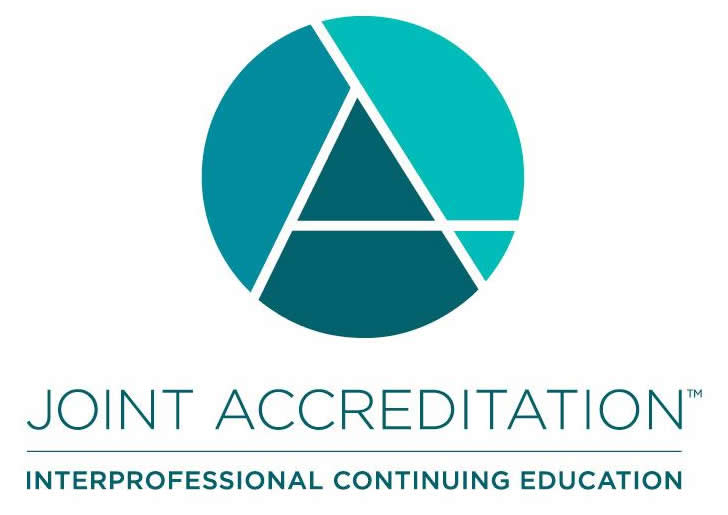
COURSE CREDITS & HOURS
AMA PRA Category 1 Credit(s)™21 ACPE Credits
21.0 21 CE Credits for Psychologists
21 ASWB ACE Credits
6 Hours of Pharmacology for NPs
COURSE FEES
TARGET AUDIENCE
PROGRAM PURPOSE
- Cardiovascular Disease in Women - Diabetes
- To discuss some of the clinical presentation of cardiovascular disease in women compared to men.
- To describe the American Diabetic Association (ADA) diagnostic and treatment guidelines for Type 2 diabetes
- Cardiovascular Disease in Women - Hypertension
- To describe the Joint National Committee on Hypertension 8 guidelines for blood pressure.
- To discuss the SPRINT Trial results and their impact on the JNC 8 guidelines
- Cardiovascular Disease in Women - Dyslipidemia and Unstable Plaque
- To discuss the AHA/ACC guidelines for the treatment of lipid disorders in women, and the therapies available to improve them.
- To review the role of unstable coronary artery plaque as a cause of acute cardiac death.
- Diagnosing and Treating Women with Monopolar and Bipolar Depression Disorders
- To analyze the clinical nuances and differences between these two forms of depression.
- To describe an overview of the benefits and limitations of the various medication classes presently available to treat monopolar and bipolar depression disorders.
- Diagnosis and Management of Headache in Women
- To explain the similarities and differences between idiopathic intracranial hypertension, migraine, tension, cluster and sinus headaches in adults.
- To discuss the more frequent incidence of vascular disease in individuals with migraine with aura.
- To review the pharmacological therapies for migraine including Âabortive and Âpreventative therapy, as well as discuss the therapies of the other more common headaches seen in women in the primary care and women's health clinical settings.
- Osteoporosis in Women
- To review the medications that are associated with osteoporosis.
- To discuss the lifestyle and therapeutic options for the prevention and treatment of osteoporosis.
- To analyze the adverse effects that accompany the use of medications utilized in the treatment of osteoporosis
- Sexually Transmitted Diseases
- To recognize the risk of sexually transmitted infections after a single unprotected sexual encounter.
- To describe the rational use of pharmacologic agents for the treatment of common STDs, excluding AIDS, following the most recent guidelines from the Center of Disease Control.
- To assess the role of expedited partner therapy in the treatment and prevention of STDs.
- Travel Medicine
- To provide a general understanding of pre-travel health preparation including health documents, a travel health kit, travel insurance issues and immunizations.
- To review the symptoms and signs of travelers' diarrhea, airplane travel including jet lag, cruise travel issues and altitude illness.
- To discuss specific preventive guidance for traveler-related illnesses, as well as illness specific therapeutic regimens
- Movement Disorders: Parkinson's Disease, Essential Tremor, and Restless Leg Syndrome
- List the common and less common symptoms and signs of Parkinson's disease and Essential Tremor.
- Name the five basic criteria for diagnosing Restless Leg Syndromes (RLS).
- Discuss the rational use of pharmacologic agents in the management of Parkinson's disease, RLS and Essential Tremor
- Things they never told you about grief
- Describe the normal processes of grief after the death of a loved one.
- Describe complicated grief.
- Describe the similarities and differences between grief and depression.
- Describe and discuss treatment of bereavement-related depression.
- Diagnosis and management of GAD and panic disorder
- Describe the clinical characteristics of GAD and PD
- Describe the relationship between GAD and PD and other medical conditions Describe and discuss evidence based treatment for these anxiety disorders
- When to worry about memory
- Distinguish between the cognitive changes seen in normal aging, mild cognitive impairment, and dementia
- Describe the differential diagnosis of dementia
- Discuss the interventions that could potentially reduce risk and impact of dementia
- Sorting out confusion
- Recognize that confusion represents a crisis until proven otherwise
- Be able to recognize four common underlying problems that present with confusion
- Demonstrate familiarity with some common tools for evaluating confusion
- The Psych Toolbox: Office evaluation of memory, anxiety, and affective disorders
- Demonstrate enhanced evaluation skills necessary to screen for and diagnose cognitive impairment/capacity, affective and anxiety disorders, and ADHD in the primary care settinga
- They say I'm getting crispy around the edges.
- Self-monitor for symptoms of burnout.
- Employ personal and organizational interventions to address the problem of high rates of burnout and depression among physicians
- Things I wish I'd known a year ago about primary care psych
- Describe very recent developments in the diagnosis and management of mental disorders common in primary care medicine
- Depression, anxiety, and cardiovascular disease
- Describe the association between negative psychological states and cardiovascular health
- Describe physiologic and health behavior mechanisms that may mitigate that relationship
- Describe ways to diagnosis depression and anxiety
- Describe safe and effective treatments for depression and anxiety
- The somatizing patient
- Identify 3 common types of somatization seen in primary care setting
- Know DSM 5 criteria used to diagnose Somatic Symptom Disorder
- Identify at least 1 assessment tools used to diagnose somatic symptom disorder
- List at least 4 treatment methods used to manage somatic symptom disorder.
- Behavior disturbances in dementia
- Determine whether behavioral issues warrant pharmacologic treatment or hospitalization.
- Individualize treatment for dementia based on symptoms and evidence of efficacy.
- Identify medical and nonpsychiatric causes of behavioral disturbances.
- Provide interventions capable of reducing behavioral disturbances in this population.
















 Credit Designation for Social Workers: As a Jointly Accredited Organization, Continuing Education, Inc is approved to offer social work continuing education by the Association of Social Work Boards (ASWB) Approved Continuing Education (ACE) program. Organizations, not individual courses, are approved under this program. Regulatory boards are the final authority on courses accepted for continuing education credit. Social workers completing this course receive 21 Clinical continuing education credits.
Credit Designation for Social Workers: As a Jointly Accredited Organization, Continuing Education, Inc is approved to offer social work continuing education by the Association of Social Work Boards (ASWB) Approved Continuing Education (ACE) program. Organizations, not individual courses, are approved under this program. Regulatory boards are the final authority on courses accepted for continuing education credit. Social workers completing this course receive 21 Clinical continuing education credits.






